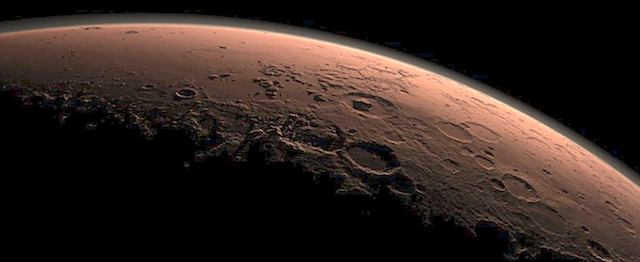 Comets and asteroids as large as West Virginia smacking into Mars some 4 billion years ago could have created a haven for life there not so long after the birth of the solar system.
Comets and asteroids as large as West Virginia smacking into Mars some 4 billion years ago could have created a haven for life there not so long after the birth of the solar system.
The ancient impacts some 4 billion years ago could have melted subsurface ice on a cold and barren Mars, producing regional hydrothermal systems much like those in Yellowstone National Park that harbor extreme life today, says Professor Steve Mojzsis [University of Colorado]. The solar system is believed to be roughly 4.6 billion years ago.
Scientists have long known there was once running water on Mars, as evidenced by ancient river valleys, deltas and parts of lake beds, explains Mojzsis, a professor in geological sciences. In addition to creating hydrothermal fields, such massive impacts on Mars could have temporarily increased the planet’s atmospheric pressure, periodically heating the planet up enough to “re-start” a dormant water cycle.
“This study shows the ancient bombardment of Mars by comets and asteroids would have been greatly beneficial to life there, if life was present,” says Mojzsis. “But up to now we have no convincing evidence life ever existed there, so we don’t know if early Mars was a crucible of life or a haven for life.” (…)
Published in Earth and Planetary Science Letters, the study (“Thermal effects of impact bombardments on Noachian Mars“) was conducted by Mojzsis and Oleg Abramov, a researcher at the U.S. Geological Survey in Flagstaff, Arizona and a former CU-Boulder research scientist under Mojzsis. [More at links]








